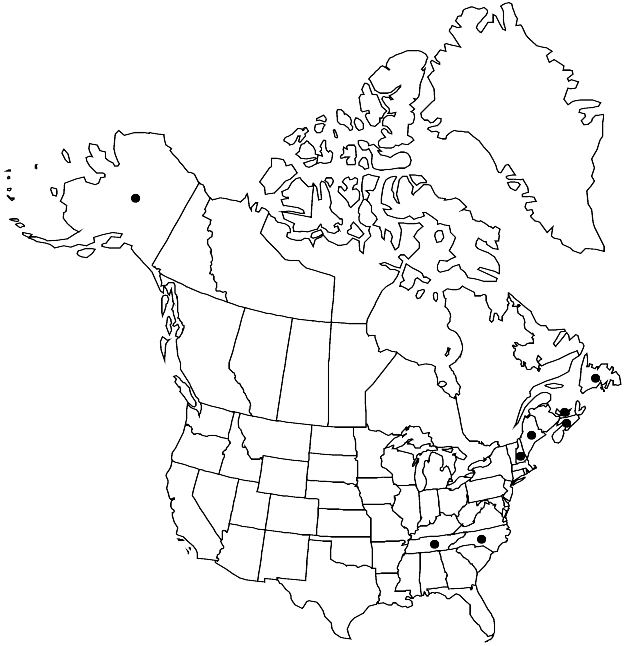Isothecium myosuroides
Bryol. Univ. 2: 369. 1827.
Plants medium-sized, yellowish to dark green, not strongly glossy. Stems with stipe short to absent, secondary stems 2–4 cm, not julaceous when dry, irregularly branched, sometimes close, branches arching downward, branches of secondary system sharp-tipped, flagelliform branches frequently present, 2–5 cm, attenuate, with narrower smaller leaves; pseudoparaphyllia foliose, sometimes toothed, often blunt and broad. Primary stem leaves broadly or narrowly triangular; margins nearly entire; apex sometimes attenuate; ecostate or costa present; alar cells barely differentiated, region small, to 1/10 leaf length. Branchlet leaves ovate to ovate-lanceolate; margins toothed throughout, most strongly in apiculus; apex attenuate; costa to 2/3 leaf length; alar cells usually shorter, except in shoot decurrent portion, region well defined, small, sometimes excavate, at marginal insertion. Seta 1–2 cm. Capsule 1–1.5 mm.
Habitat: Rock, cliffs, boulders, shaded sites in forests, epiphytic, tree bases
Elevation: low to moderate elevations
Distribution

Nfld. and Labr. (Nfld.), N.S., P.E.I., Alaska, Maine, N.H., N.C., Tenn., Europe, n Africa, Atlantic Islands.
Discussion
The eastern representation of Isothecium myosuroides is clearly the same as the European species, but the relationship of western North American material is unclear. K. Ryall et al. (2005) supported this conclusion with molecular data, but some California specimens identified as this species suggest that further analysis is necessary to clarify their identity. Isothecium myosuroides, although showing some variability, is far more uniform than I. stoloniferum, and the infrequency of sporophytes in the former suggests that cloned populations are frequent. The stems of I. myosuroides are creeping and radiculose.
Selected References
None.
